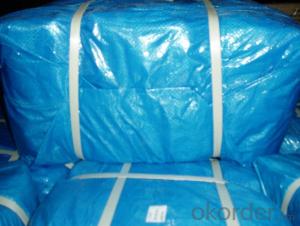Barbed Pipe Fittings Plastic: Grip and Seal
The world of plumbing can be a complex one, with a myriad of tools, materials, and techniques all designed to make our lives easier. One such innovation that has made a significant impact is the use of barbed pipe fittings, particularly those made from plastic. These little marvels offer a simple, effective, and efficient way to connect pipes without the need for soldering or clamps. But what makes them so special, and how do they work? Let’s dive in and explore the world of barbed pipe fittings plastic, focusing on their grip and seal capabilities.
The Basics: What Are Barbed Pipe Fittings?
Before we get into the nitty-gritty, let’s clarify what barbed pipe fittings are. These are connectors used in plumbing and irrigation systems that have a series of sharp, tooth-like projections on one end. They are designed to grip and seal onto the pipe when inserted, creating a watertight connection without the need for additional fasteners. The name ‘barbed’ comes from these distinctive projections, which resemble the barbs of a fishhook.
Why Choose Plastic Over Metal?
You might wonder why anyone would choose plastic over the traditional metal for pipe fittings. Well, there are several reasons. Plastic fittings are generally lighter, easier to handle, and less prone to rust or corrosion. They are also more cost-effective, making them an attractive option for DIY enthusiasts and professionals alike. Moreover, plastic fittings are easier to work with, as they can be cut, threaded, and connected without the specialized tools required for metal fittings.
The Art of Grip: How Do They Hold On?
The grip of a barbed pipe fitting is all about those barbs. When you push a pipe into the fitting, the barbs dig into the pipe material, creating a strong mechanical bond. This bond is what holds the pipe in place, preventing it from slipping out or rotating within the fitting. The key to a good grip is the design and material of the barbs, as well as the compatibility of the pipe material with the fitting.
The Science of Seal: Creating a Watertight Connection
A good seal is crucial for any plumbing system to prevent leaks and ensure efficient water flow. Plastic barbed pipe fittings achieve this through a combination of the barbs’ grip and the use of an O-ring or a rubber seal within the fitting. When the pipe is inserted, the seal is compressed, creating a tight seal against the pipe’s surface. This dual-action sealing mechanism ensures that water doesn’t escape and that the connection remains secure even under pressure.
Easy Installation: A Step-by-Step Guide
Installing barbed pipe fittings is a breeze. Here’s a simple step-by-step guide to help you get started:
1. Prepare Your Materials: Gather your pipes, fittings, and a pipe cutter if necessary.
2. Measure and Cut: Measure the length of pipe you need and cut it to size using a pipe cutter. Ensure the cut is clean and straight for a proper fit.
3. Insert the Pipe: Push the pipe into the fitting until it stops. You should feel resistance as the barbs grip the pipe.
4. Check the Seal: Once the pipe is in place, check for any gaps or leaks. If necessary, you can use a sealant to ensure a watertight connection.
5. Secure the Connection: While not always required, you can use a hose clamp or a similar fastener to provide additional security to the connection.
Versatility in Use: Where Can They Be Used?
Plastic barbed pipe fittings are incredibly versatile. They can be used in a variety of applications, including:
– Home Plumbing: For connecting water supply lines, drain pipes, and more.
– Irrigation Systems: Perfect for connecting hoses and sprinklers in your garden or farm.
– Automotive: Used in some car models for fuel and coolant lines.
– Industrial Applications: In certain scenarios where lightweight and corrosion-resistant connections are needed.
Maintenance and Troubleshooting
Like any plumbing component, barbed pipe fittings require occasional maintenance to ensure they continue to perform at their best. Here are a few tips:
– Regular Inspections: Check for any signs of wear or damage, and replace fittings as needed.
– Cleaning: Remove any debris or buildup that might affect the grip or seal of the fitting.
– Replacement: If a fitting fails to grip or seal properly, it’s best to replace it rather than trying to repair it.
The Future of Barbed Pipe Fittings
As technology advances, we can expect to see further improvements in the design and materials used for barbed pipe fittings. This could lead to even stronger grips, better seals, and potentially new applications that we haven’t even considered yet. The future looks bright for these handy little connectors.
Conclusion
Barbed pipe fittings plastic have revolutionized the way we approach plumbing connections. Their ease of use, cost-effectiveness, and versatility make them an invaluable tool in any plumber’s toolkit. Whether you’re a seasoned professional or a DIY enthusiast, understanding the grip and seal of these fittings can save you time, money, and hassle. So the next time you’re faced with a plumbing project, don’t forget the power of the barb!

